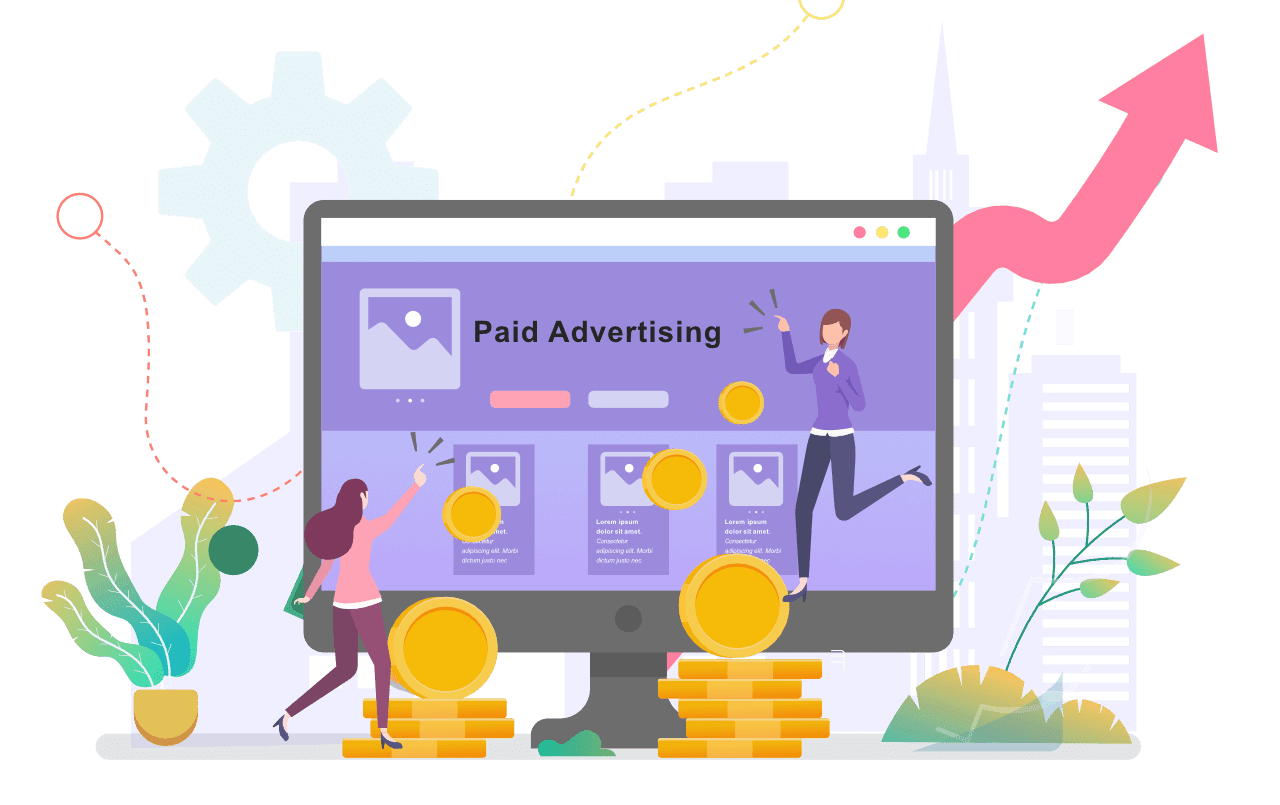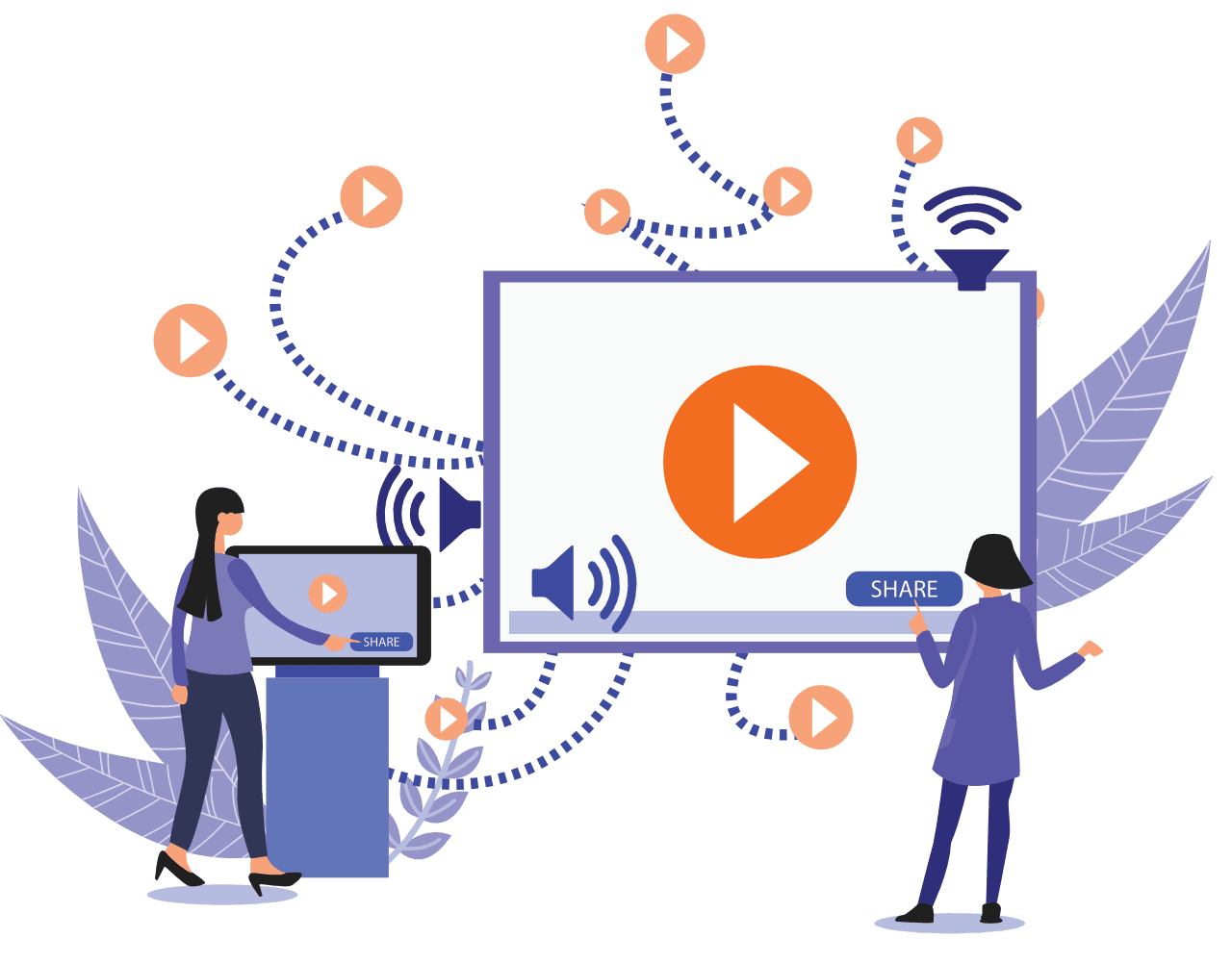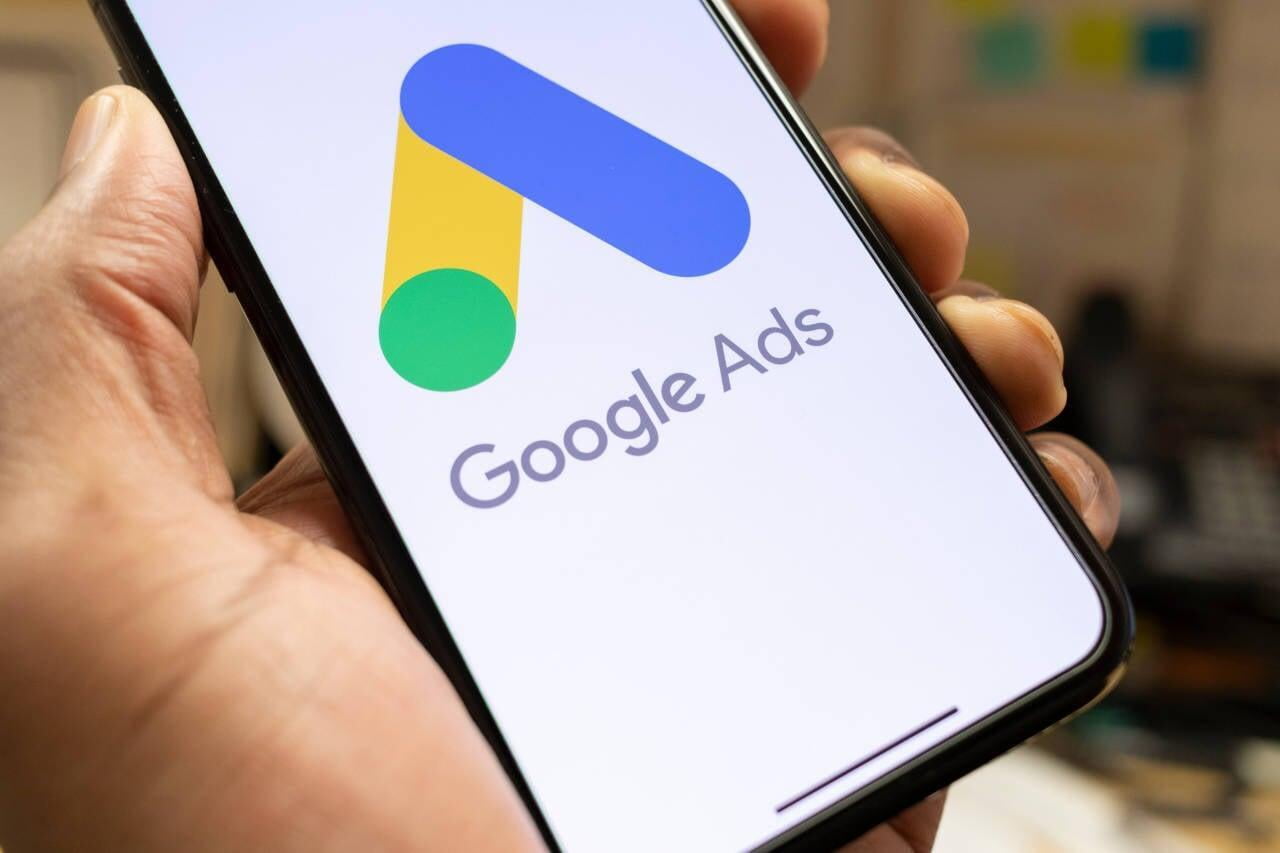When it comes to online advertising, the power of getting your business on both search engines and social media can’t be beaten. Let’s take a look at the numbers: 84% of the online U.S. population uses Google search, and 81% of U.S. consumers use search engines to look for a product or service to buy. Every day, 3.5 billion queries are searched on Google in the U.S. alone. What’s more, nearly 70% of the online U.S. population is on Facebook, and 37% is on Instagram (and Instagram is growing fast). More than 130 million Americans use Facebook Messenger, too.
This means that by using these two platforms — Google and Facebook — together, you have the potential to reach, well, almost everybody. Running a company means making tough business decisions. That holds true for your marketing efforts as well. We’re often asked whether an organization should use Facebook or Google ads. The answer is always both, but with different goals and strategies for each platform. In this article, we’ll cover how you can make your PPC strategy and social media strategy work together so that they complement one another.
How Social Ads and PPC Ads Work Together
How Social Ads and PPC Ads Work Together
ROI Tracking
ROI Tracking
- Click-through rate (CTR): This is the percentage of people who see your ad and click on it.
- Cost per conversion (CPC): This is the average amount of money you spend on ads to get one conversion.
- Conversion rate: This is the percentage of people who click your ads and convert them into customers.
All of these metrics indicate how well your PPC and social campaigns are performing. If your click-through or conversion rates are below average, you need to change something. Similarly, if your CPC is high, you need to change something too.
You can improve a low CTR with new ad text and ad extensions that help you stand out and encourage users to click. You can include CPC by refining your landing pages (which we’ll discuss next) to convince users to convert. And you can improve your overall conversion rate in the same way. With all of this in mind, you’re sure to get a strong ROI from your ad campaign.
By tracking ROI, you can take the insights gathered from one channel and use them to optimize the other. For instance, social ads provide better testing options so that you can fine-tune your audience segmentation. Once you find an audience segmentation that works, you can write better copy to target your ideal audience. In contrast, PPC ads are great for finding search intent keywords. Those same keywords can be added to social ads to evoke emotion and get prospects to buy or take action.
Competitive Research
Competitive Research
By conducting competitor research on these different platforms, you can:
- Learn what your competitors are up to.
- Find out where you can compete.
- Assess where you should concede to save your ad spend.
PPC competitor analysis is the most crucial step in creating a successful advertising campaign. It can help you get valuable insights that will inform your targeting and bidding strategy. To do a PPC competitor analysis, you will have to identify the biggest competitors in your niche first. After that, you will have to figure out what keywords they are targeting so that you can create campaigns that are better than your competitors. PPC competitor analysis saves you the time of investigating each of your competitors manually.
When finding PPC competitors, you can then use social spy tools like Facebook Audience Insights and other social spy tools to view their social media marketing ads. From there, you can craft better, more targeted ads that are more likely to convert. Furthermore, you'll have a good understanding of the type of ads that are currently converting in the industry.
Omni Channel Strategy
Omni Channel Strategy
The biggest benefit of an omnichannel marketing strategy is a better customer experience. Customers interact with brands through advertising, social media, websites, e-commerce platforms, and brick-and-mortar stores. The omnichannel approach makes that experience more personalized and tailored to their needs. Leading to increased customer loyalty, better conversions, and more word-of-mouth advocacy.
Secondly, successful omnichannel strategies lead to better marketing campaigns. With all that data on their hands, brands can craft better marketing messages and target more specific audiences using different channels.
Thirdly, a company with an omnichannel strategy has several data sources. This allows them to understand customer touchpoints (points of communication) better, which allows them to design customer journeys more authentic and tailored to their customer's needs. Moreover, this kind of data can be interpreted in new product design or new feature development as well as detecting new trends in the market.
For branding purposes, it's better to increase the number of times that a potential buyer sees your brand. For example, it takes about seven times for a prospect to hear or see your marketing message before they take action and buy from you. Using multiple channels and retargeting messages can help to increase familiarity and build trust with your brand.
Remarketing Strategy
Remarketing Strategy
Remarketing, also known as retargeting, is a very common and popular form of digital marketing in which marketers serve ads to users who have visited their website or a specific web page and who have or have not taken a specific action. It’s an effective way to target people who have already shown some interest in your business or brand. Because you are targeting past visitors or existing customers, it’s called “re”-marketing. Think of it as a second chance to convert, up-sell, or retain customers with online ads or campaigns. You can do remarketing in different ways and with different ad platforms, like Google Ads or Facebook ads.
It’s not difficult to set up a remarketing campaign for your website. What it requires is pixel installation. When you create a campaign with a particular ad network, the network will provide you with a small piece of code (called a pixel tag) to add to your website. Every time a new user visits your site, the code will drop an anonymous browser cookie, and the user will be added to your retargeting list. When the same user visits another site that hosts display or native ads from your ad network provider, the system will serve your ad to this particular user. This will occur as long as you have an active campaign running.
Google’s move to shut down the use of third-party cookies will impact the ability of marketers to remarket. That’s why it is important to advertise on platforms based on the use of first-party data that allows tracking. Although the move to a cookieless world has been somewhat delayed, it is still important to start planning now for tools and tactics that will allow you to remarket in the future.
You can integrate PPC ads and social ads by retargeting people who've landed on your landing page but haven't completed an action. For example, you can use social ads for retargeting people who have already seen your PPC ads. Remarketing to your prospects on multiple platforms seems less pushy and therefore tends to be more effective.
Audience Targeting
Audience Targeting
The greatest benefit of audience targeting is that you can test brand and product-specific messages against various demographics and interest groups. Look at the search terms report in your Google Ads platform (formerly Google AdWords) to find those long-tail gold mines. These are the search terms that are actually generating clicks from your broad and phrase match campaigns.
With this unique wealth of knowledge, you'll be able to better inform your SEO strategy by unlocking hidden long-tail opportunities aligned to your different target audience segments. You can use the data and insights you gather from one tactic to help with the other and get a better grasp of who your actual target audience is. For example, you can specifically target consumers who have clicked on your paid search ad with Facebook ads. This gives you an incredible way to increase your chances of converting a potential lead into a customer.
You can also use the information you’re able to see from your paid search campaigns to adjust and refine your audience targeting on Facebook, so you know you’re targeting users who are most likely to become your customers. Integrating lead generation forms into your landing pages that you use with your PPC and Facebook advertising campaigns can help you collect valuable first-party data that you can use to improve your audience targeting even more.
Testing
Testing
Successful PPC marketers know that testing is key. So bring that concept over to social media. For example, use Facebook Audience Insights to get a better handle on your best-performing demographics. When you use information across platforms to improve each part of your strategy, you’ll spend less money chasing numbers and more money earning conversions.
Budgeting
Budgeting
When planning your social ads, we recommend anywhere from four to eight prospecting and remarketing ads to run at the top of the funnel. Technically you can run up to 50 ads at once, but four to eight is our suggested sweet spot. As social ads run, data is derived to show their effectiveness, which we use to inform our account optimizations on paid search.
For example, when we scale our efforts on paid social, we can expect to see increased search volume in our PPC campaigns. It’s best to start broad and use paid search and paid social media marketing services to identify top-performing ads and ensure they’re getting the budget they need.
While paid search and paid social advertising have a supporting impact on one another, it’s important to note that different goals should be set for either platform. Remember that each tool has its benefits, and it’s best to first understand the capabilities of both and how they work together. Furthermore, continue testing to provide ongoing analysis of what’s working and what is not, so you can forecast accordingly.
PPC and Paid Social Ad Optimization
PPC and Paid Social Ad Optimization
A benefit to diversifying your marketing mix is one channel can learn from the other. That is especially true between PPC and Paid Social Ads platforms. Here are a few to test.
Remarket to Paid Social Site Visitors
Remarket to Paid Social Site Visitors
Display remarketing is very effective in many formats. Segmenting your audiences based on the content they view and their engagement with your site is a great way to improve its effectiveness even more. One of the major benefits of paid social is its upper-funnel new user acquisition capabilities. Combine that with your PPC remarketing by segmenting users based on the number of social touchpoints by tagging your ads based on the stage in the funnel. This is a great way to qualify your audience further and ensure you are investing appropriately to reach users who are engaging again and again.
Similar to the above, leveraging remarketing lists for search is a great way to improve spending efficiency and boost conversion. Use those same audiences as remarketing lists for search ads and ad bid modifiers. If a user has engaged with a paid social ad multiple times and is now actively searching branded or nonbranded queries that match your keywords, they are very highly qualified and worth a higher average CPC.
Improve PPC Ad Copy With Analysis
Improve PPC Ad Copy With Analysis
Writing engaging PPC ad copy is crucial to the success of a campaign. When we create PPC ad copy for Google Ads, we get limited feedback. Raw numbers like CTR tell us which ad copy is resonating the best, but that can sometimes be misleading. Copy on paid social gets more direct feedback in the way of social sentiment. Monitor comments from users on social and look for opportunities to create more clarity and boost CTR for PPC.
If you want to leverage your PPC and social media paid advertising strategy, consider our strategy consulting and marketing consulting services. At Universal Creative Solutions, we’re here to help you improve your ad campaigns to obtain more top-of-funnel leads and drive more sales. We’ll analyze your current ad campaigns and cover how you leverage data between the two to complement each other. Book a consultation call today and learn how we can help you grow your business.






